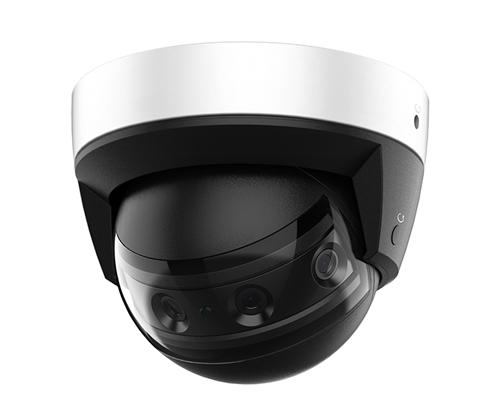Fisheye IP Cameras Vs Multi-Sensor IP Cameras
Fisheye IP cameras and multi-sensor IP cameras are two different types of surveillance cameras, each with its own advantages and use cases. Here’s a comparison between the two:
Fisheye IP Cameras:
Field of View:
Fisheye cameras have an extremely wide field of view, typically ranging from 180 degrees to 360 degrees. They can provide a panoramic view of an entire area with a single CCTV fisheye lens.
Distortion:
Fisheye cameras use a special fisheye lens design that produces a distorted, curved image. However, with the help of software, the image can be dewarped to restore a more natural-looking view.
Single Sensor:
Fisheye cameras typically have a single sensor, which captures the entire scene in a single image.
Installation:
Fisheye cameras are often ceiling-mounted or wall-mounted to maximize their field of view. They require careful positioning to ensure optimal coverage.
Use Cases:
Fisheye cameras are suitable for monitoring large, open areas where a wide-angle view is required, such as parking lots, shopping malls, and open spaces. They can help reduce the number of cameras needed to cover a given area.
The fisheye IP cameras
Multi-Sensor IP Cameras:
Field of View:
Multi-sensor cameras have multiple sensors (usually two to four) that can be individually adjusted to provide a combination of wide-angle and zoomed-in views. Each sensor captures a specific area, and the views can be stitched together to create a composite image.
Image Quality:
Multi-sensor cameras generally offer higher resolution and better image quality compared to fisheye cameras because each sensor can capture a dedicated portion of the scene.
Flexibility:
The ability to adjust each sensor independently offers more flexibility in terms of coverage and zoom levels. It allows for targeted monitoring of specific areas or objects within the larger scene.
Installation:
Multi-sensor cameras can be mounted in various ways, such as ceiling-mounted or wall-mounted, depending on the desired coverage and the specific camera model.
Use Cases:
Multi-sensor cameras are suitable for applications where both wide-area coverage and detailed monitoring of specific areas or objects are required. They are often used in critical infrastructure, airports, large-scale events, and areas that require both overview and detailed surveillance.
The multi-sensor cameras
Ultimately, the choice between fisheye IP cameras and multi-sensor IP cameras depends on your specific surveillance needs. Consider factors such as the area to be monitored, desired field of view, image quality requirements, and budget to determine which type of camera is the most suitable for your application.

